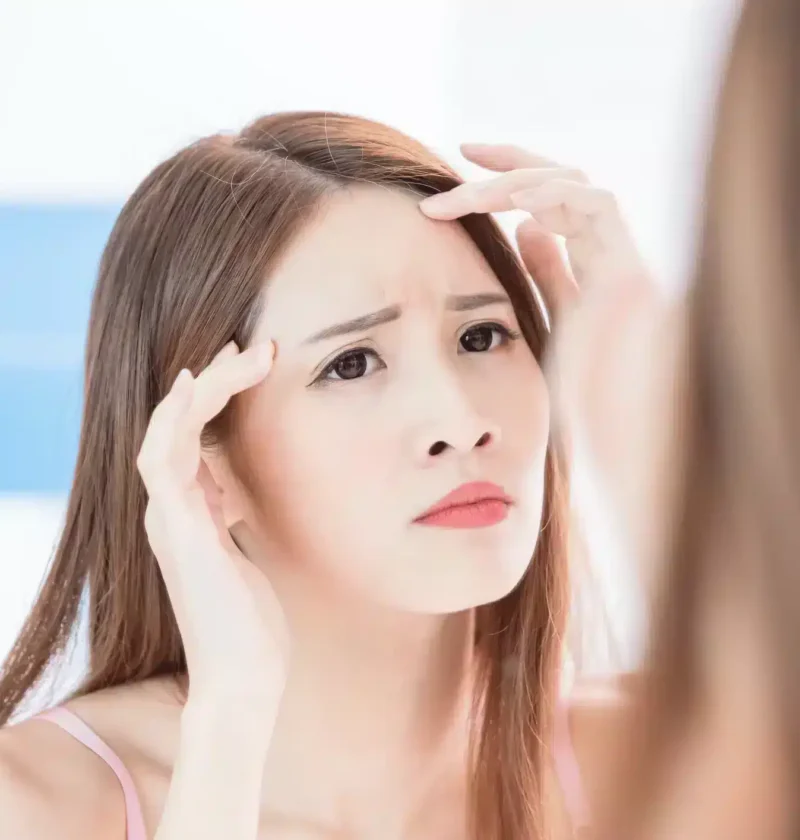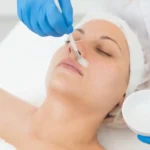
Treat Forehead Lines with Botox
For decades, Botox has been the treatment of choice for horizontal forehead lines. Botulinum toxin is the top nonsurgical cosmetic procedure in the U.S. since 2000, with over 4 million procedures performed in 2016.
Generally, forehead lines create a stressed, worried, and fatigued appearance. Repetitive contractions of the frontalis muscle is the main cause of these lines. Treating this region may be the most nuanced of cosmetic neurotoxin injections, as it can compromise the brow area. An experienced and board-certified injector is in great demand, judging from the popularity of the procedure among female and male patients.
How to determine who is a good candidate
The presence of horizontal forehead lines is directly proportional to a patient’s age. It will be more beneficial for younger patients with minimal lines to undergo Botox procedure, as severe forehead wrinkles in older patients cannot be corrected by botulinum toxin alone.
Although forehead Botox is ideal for all genders, females are generally more concerned of the presence of these wrinkles than men. Many patients would ask for elimination of forehead lines without the “frozen forehead” look, but there are some individuals who prefer total loss of movement. It would be helpful to discuss your patients’ aesthetic goals prior to injection.
Botox treatments costs an average of $376, according to a survey performed by the American Society for Aesthetic Plastic Surgery. The overall cost depends on the area being treated; the patient’s desired results, and injector fees. Each unit ranges from $9 to $20 in the United States.
Treatment details
Correcting forehead lines requires injection into the frontalis muscle, the muscle responsible in elevating the eyebrows, the skin of the brow and forehead. Muscle fibers of the frontalis are bounded superiorly by the membranous galea aponeurotica (MGA). If the patient has downward extension of the MGA in the midline with little or no muscle fibers, botulinum toxin will be ineffective in this area.
When injected intramuscularly, Botox blocks nerve impulses that cause the frontalis muscle to contract. The reduced activity of the muscle creates a smoother appearance of the forehead. When the lines are too deep or if they are present when the face is totally relaxed, it is still possible to soften them; however, significant improvement will be difficult to achieve unless a dermal filler is used concomitantly.
Tips for treatment
Forehead injection takes about 15–20 minutes with no downtime. The goal of the treatment is to reduce lines or soften wrinkles without causing brow ptosis and elimination of all expression from the upper face. It is recommended to perform frontalis injection in conjunction with correcting the glabellar lines and crow’s feet (if present), as this can minimize adverse events and complications.
• A patient assessment begins by asking the patient to forcefully raise their brows. Inform the patient of any discrepancies in brow position at maximal contraction and at the baseline.
• Mark 4 to 6 injection sites across the forehead at least 2–3cm above the orbital rim.
• The recommended dosage for horizontal forehead lines is 20 units in women, but approximately 8 to 18 units are typically used. For men, the typical dose ranges from 16 to 32 units.
• Inject 1–4 units of Botox for each injection site placed 1.5 to 2.5cm apart.
• If you feel the periosteum or the skull while injecting, back the needle up approximately 3–4mm before releasing the neurotoxin.
How to reduce risks
• The Spock Look (excessively arched brows) can be corrected by injecting only a small dose of toxin (2–4 units) to bring the peaked brow down.
• Reduce the risk of brow ptosis by ensuring proper placement and use a lower initial dose to avoid this unwanted result.
• Avoid mask-like and cock-eyed appearance by performing injections at least 2cm above the eyebrows.
• Use a more concentrated dose so that minimal volumes are injected to avoid the migration of botulinum toxin.
• Gently massage the injection sites for a few seconds to relieve transient pain and help distribute the toxin evenly.
How long will the results last?
During initial treatment, weakening of the frontalis muscle may occur asymmetrically. Wrinkling may be present at 1 side of the forehead even at rest, and not on the other. Advise the patient to return 2–3 weeks post injection to assess and correct minor asymmetries. Botox effects for forehead lines can last as long as 4–6 months.
Before and after treatment expectations
Botulinum toxin A is an excellent agent for smoothing dynamic forehead wrinkles. When performed properly, it provides gratifying results with little to no downtime. A more conservative approach is preferred to reduce unwanted side effects. It is ideal to maintain the natural contour of the eyebrows in women, while feminization of the male brows should be avoided. High doses of Botox will eliminate all muscle movement, even with forced contraction, and can result in a flat and mask-like appearance. By allowing little movement or wrinkling of the frontalis, patients can experience a smooth and more natural-looking forehead.
Aesthetic medicine products are developed and regulated to meet stringent safety and efficacy standards. They are typically administered by trained healthcare professionals such as dermatologists, plastic surgeons, and specialized nurses in clinical settings. These products aim to provide effective solutions for cosmetic enhancement, skin rejuvenation, and overall aesthetic improvement, contributing to both physical appearance and self-confidence.
Key categories of aesthetic medicine products include:
-
Injectables: This category includes products such as dermal fillers, botulinum toxins (e.g., Botox), and collagen stimulators. These injectables are used to smooth wrinkles, add volume, and improve facial contours.
-
Skin Rejuvenation Treatments: Products like chemical peels, microdermabrasion systems, and laser devices are used to improve skin texture, reduce pigmentation irregularities, and enhance overall skin tone.
-
Skincare Products: These include medical-grade cleansers, moisturizers, serums, and topical treatments containing active ingredients like retinoids, antioxidants, and growth factors. They are formulated to address specific skin concerns such as acne, aging, and hyperpigmentation.
-
Hair Restoration Products: Medical treatments and products designed to promote hair growth and treat conditions such as male and female pattern baldness.
-
Body Contouring and Fat Reduction: Devices and products used for non-surgical body sculpting, such as cryolipolysis (cool sculpting) devices and injectable lipolytics.
-
Cosmeceuticals: High-performance skincare products that bridge the gap between cosmetics and pharmaceuticals, often containing potent ingredients with proven clinical benefits.
-
Wound Care and Scar Management: Products like silicone sheets, gels, and advanced wound dressings used to improve healing and reduce the appearance of scars.





